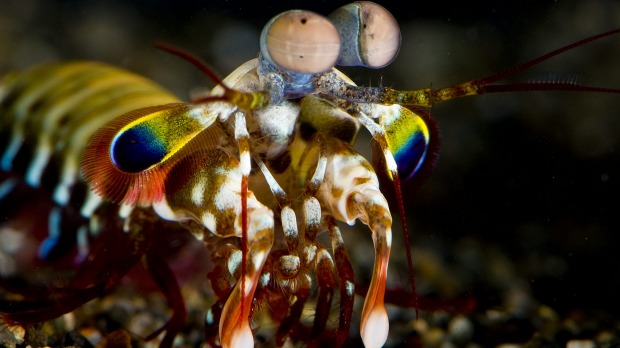
A mantis shrimp's compound eyes are 'superbly tuned' to detect polarised light.
Image credit: Roy Caldwell
Taking inspiration from the Mantis Shrimp's eyes, University of Queensland scientists, in partnership with US and UK researchers, have developed an advanced camera capable of visualizing brain activity and detecting various forms of cancer.
The research revealed that several animals detect and differentiate between objects using polarized light, of which the shrimp’s compound eyes are specially designed to detect the polarized light. The new camera design has been developed by mimicking aspects of the shrimp’s eyes.
According to Justin Marshall, one of the researchers, polarized light is reflected by cancerous tissue in a different manner when compared to surrounding healthy tissue. The innovative camera captures images that could be helpful in cancer detection and to monitor nerve cell activity, Marshall said. It transforms these hidden messages into colors that can be picked up by the human eye, he added.
Marshall went on to say that polarized light is already in use for cancer detection. However, this research team hopes to optimize these non-invasive detection techniques with the help of the shrimp-inspired sensor technology, thereby minimizing the need for biopsies and surgical procedures, he added.
The researchers believe that this discovery holds potential to redesign smartphone cameras, enabling people to perform cancer diagnosis by themselves and thereby reducing costs for health services. The research is funded by the US Airforce Office of Scientific Research, the Asian Office of Aerospace Research and Development, and the Australian Research Council.
The study results have been featured in IEEE.